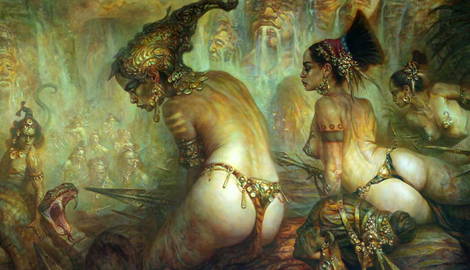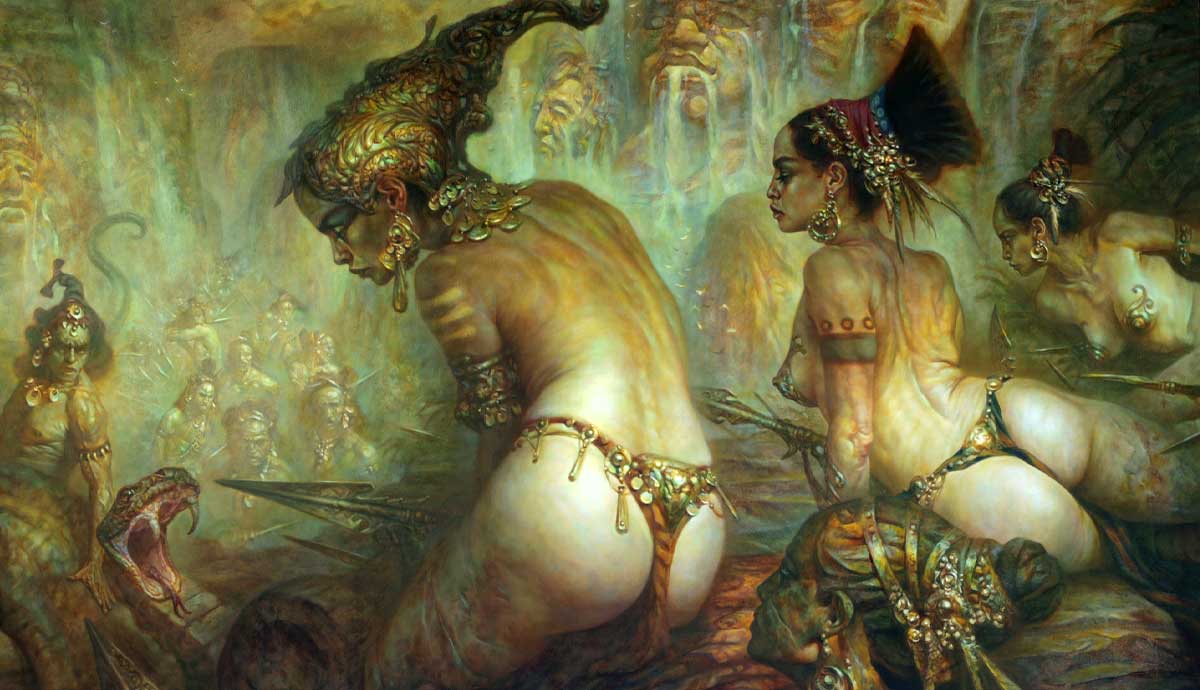
A common theme in fantasy art is the depiction of beautiful women. How women are depicted is varied, from the innocent to the erotic to the downright pornographic. Perceptions of the audience are also varied, with some seeing it as fine art, while others see it as smut that degrades women in modern society. On the other end of the spectrum, women in fantasy art are powerful beings in charge of their own agency as warriors, sorceresses, and conquerors. In this, it can be argued that the representation of women in fantasy art is an exercise in feminism (but with huge caveats).
It is difficult for a man to understand the feminine experience; it is also difficult for women to understand the motivations behind their depictions of women. This is not to say the arguments are between men and women, but rather what constitutes problematic themes in feminist debates. The arguments for and against are heated and require attention, paying heed to the societal mores from which they spring.
Frank Frazetta, Pulp Art, & Women
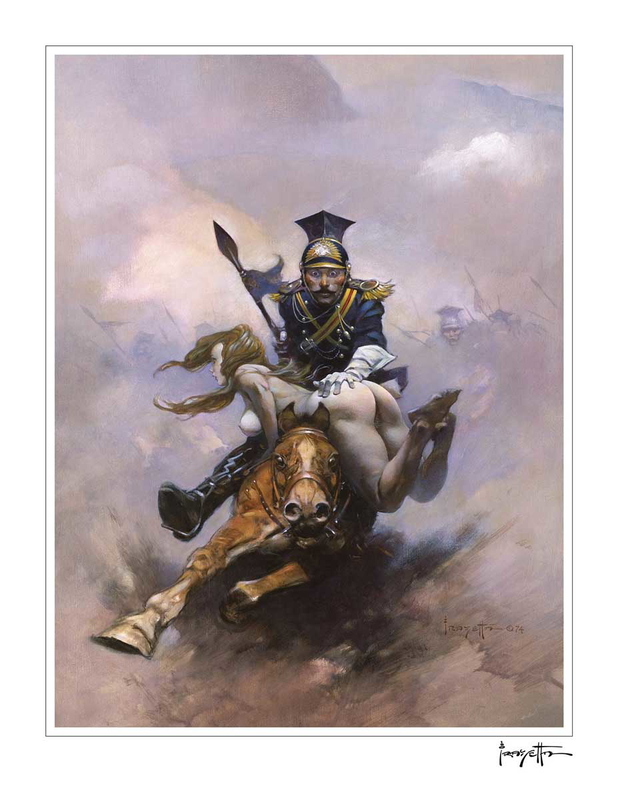
Fantasy art took off in the 1960s with comic book art and covers for pulp fantasy novels. Chief among the artists was Frank Frazetta. His distinctive style, a combination of loose and tight brush strokes, created the template from which other fantasy artists would draw inspiration and evolve. The genre was high fantasy, and with it came the two-dimensional female archetypes that still characterize perceptions of fantasy art to this day.
A common feature in pulp fiction was the depiction of women as damsels in distress or, even worse, enslaved. These women in fantasy art existed in context to the story for which they were created. At face value, these depictions of women in fantasy art, over half a century old, pose problems in society. They attract vicious condemnation as degrading to women, and it is easy to see why.
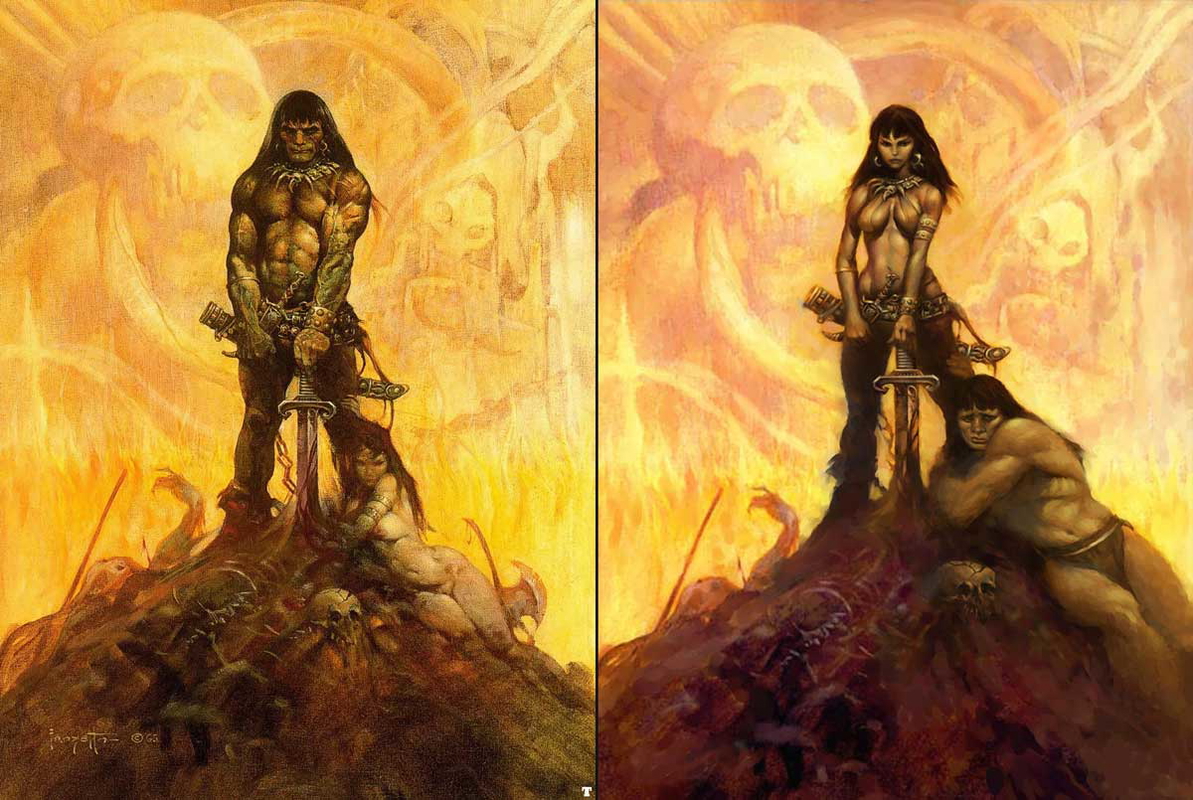
Much of Frazetta’s work presents women as adornments to muscular, heroic men. The women here act as rewards for the main character’s heroic deeds. However, to suggest that this is all Frank Frazetta painted in regard to depictions of women would be wholly unfair. His body of work includes many other paintings of women that illustrate women as more powerful fantasy figures.

In response to accusations of being sexist, Frank Frazetta wrote the following:
“I’ve been accused of being sexist and I think it’s pretty damn silly… I paint beautiful women: sometimes they look vulnerable and sometimes they look like the deadliest things on two legs. I love women. I don’t think that I suggest that they’re weak or that they’ve been taken advantage of. And when did painting the body become sexist? I could sit around painting bowls of fruit or people mowing the yard, you know, the most boring crap that would challenge no one – and who would want to see it? Nobody.”
(Excerpt from LEGACY: Selected Painting & Drawings by Frank Frazetta)
This statement may not show an understanding of the intricacies of feminist debate, but it does suggest that Frank Frazetta made an effort to respect women and that his art, however problematic, was not created out of any conscious sense of preserving the notion of patriarchy, nor was it done with any sense of malice.
This, however, does not address the issue of skimpy clothing and nudity. In this, much of the artwork is designed to be for the male gaze.
Addressing the Male Gaze

The issue of the male gaze should not be seen as something particularly unique to fantasy art. Many forms of art throughout the millennia have depicted women as sexual objects; it is not a new phenomenon. The depiction of women in fantasy art carries on a tradition that existed long before the advent of contemporary fantasy art. What has changed is simply what is considered erotic. Whether it’s pale-skinned water nymphs or gun-toting dominatrixes in latex, the issue in question is the same. Although this argument constitutes a “whataboutism” in that older depictions of women as sexual objects may be seen by feminists as problematic, just the same as modern depictions, the argument does go so far as to reveal a certain hypocrisy that needs to be addressed.
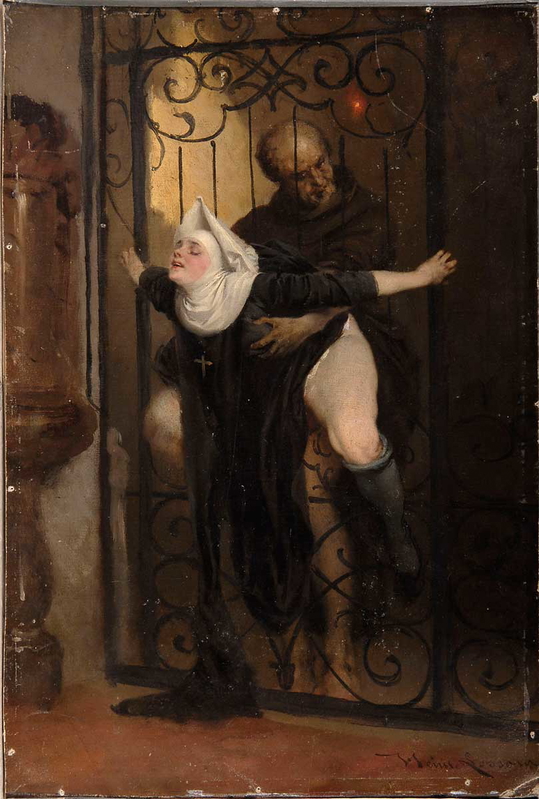
With this being said, however, it is correct to assert much of the depictions of women in fantasy art are a product of the male gaze. It is erotic. It is suggestive. Some of it is even pornographic (which raises another question on whether pornography can or can’t be art). And it is ridiculous to suggest otherwise.
This doesn’t mean that it cannot be admired as art, nor does it exist in a vacuum with the sole intent (or even an intent at all) of degrading women. This latter argument becomes stronger when one considers that much erotic depiction is created by women themselves! This would suggest that, at least from a female artist’s perspective, displaying feminine beauty in erotic and suggestive poses in fantasy art is a way to celebrate femininity and is not intended otherwise.
This leads to new debates: Is the art feminist when a woman creates it and degrading when created by a man? Is it degrading when created by both men and women? Can it be degrading and empowering at the same time? The latter is a paradox for sure.
A case in point is the art of Rowena Morrill.
King Dragon by Rowena Morrill
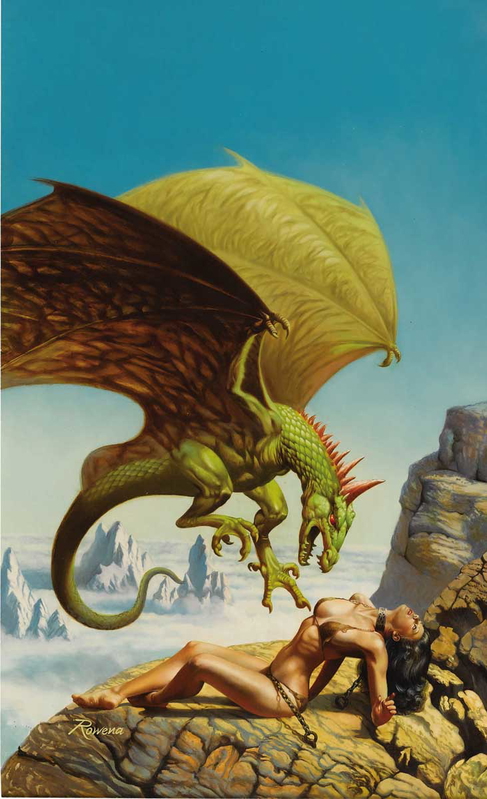
Rowena Morrill was among the first wave of fantasy artists. Along with her contemporaries, such as Frank Frazetta, Boris Vallejo, and Julie Bell, she painted women in situations, poses, and varying degrees of nudity that drew the attention of the feminist movement.
In 1980, Rowena painted a cover for Andrew J. Offut’s novel King Dragon. The painting features an almost naked woman chained to a rock at the mercy of a dragon. The work was entered into the 1981 Norwescon art show, which showcases science-fiction and fantasy art, and it drew attention from one of the organizers who deemed it degrading to women. The painting, however, remained on display partly because the committee would have had to enforce the same standards on other works as well.
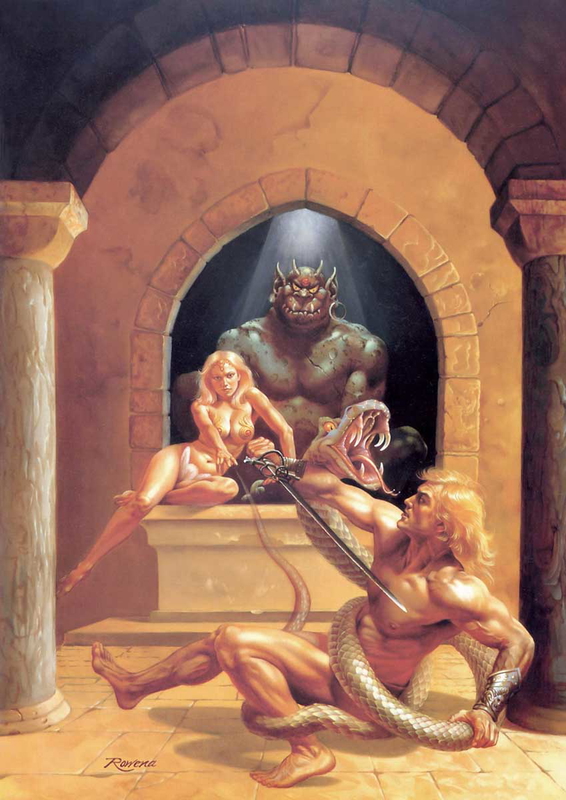
The painting gained even more widespread attention in 2003 when it was found, along with another of Rowena’s works, in a residence of one of Saddam Hussein’s sons. The two paintings were later discovered to be high-quality copies, but Rowena struggled to distance herself from the bad press. The other painting was Shadows out of Hell, which, in contrast to the helpless damsel in King Dragon, displays a woman exerting power over a man. Putting the actual artistic quality of the art aside, the archetype here is that of an evil sorceress. If concerns about nudity are an issue, it’s worth pointing out that Rowena Morrill painted men in equal levels of undress.

An argument for empowerment could be that since a woman is painting an idealized version of her own gender, she is thus promoting her own gender as beautiful. An aspect of the idealization is that just as young boys are introduced to and aspire to be muscle-bound heroic superheroes like Superman and The Hulk, girls are also introduced to impossibly proportioned versions of women. Fantasy art idealizes both sexes and exaggerates the sexual qualities of men and women. However, the argument is that it is disproportionate in the generality of fantasy art, and women in fantasy art are far more likely to be sexualized than men.
Addressing Problematic Idealizations
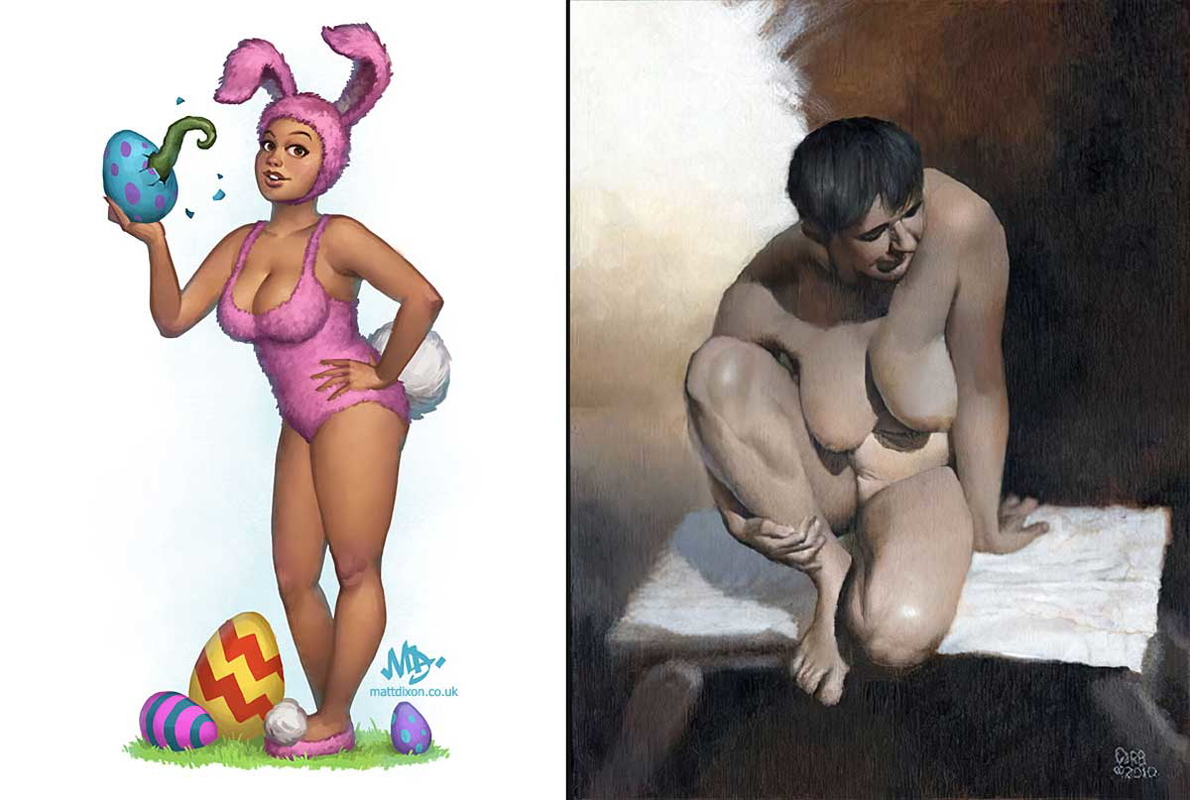
The argument thus becomes one of addressing the problem by shifting the idealization of the female physique into something more inclusive. This is not an unrealistic expectation, as different eras produce different ideals, and the world has become more inclusive and accepting of different body types. To be sure, men’s fantasies are not confined to a single ideal either. The male audience would be accepting of varying ideals, even if individuals are loath to admit it. The problem lies with being ridiculed for certain sexual preferences.
The artist Matt Dixon comes to mind when considering the body shapes of women in fantasy art. He tends to depict women who do not necessarily fit into the mold of standard societal beauty. This nonconformity does not, however, garner him any less popularity among his male audience.
Other Archetypes of Women in Fantasy Art & the Same Problem of the Male Gaze

One can clearly see how projecting women in fantasy art as damsels in distress or enslaved would be wholly problematic, even in context with the stories in which they appear. Outside of that context, the images provoke an even more scathing reaction in that they promote an image of women being subservient.
When we move away from this archetype to warriors, huntresses, sorceresses, and so on, the reaction changes but is still valid. The argument still exists that, even with powerful depictions of women, often it is accompanied by displays of sexuality that are irrelevant to the situation depicted. As a result, the accusation is that whatever the archetype, fantasy artists depict the agency of women’s power lying within their sexuality. Women become exoticized, and while no longer damsels in distress, they are still a product of the male gaze.
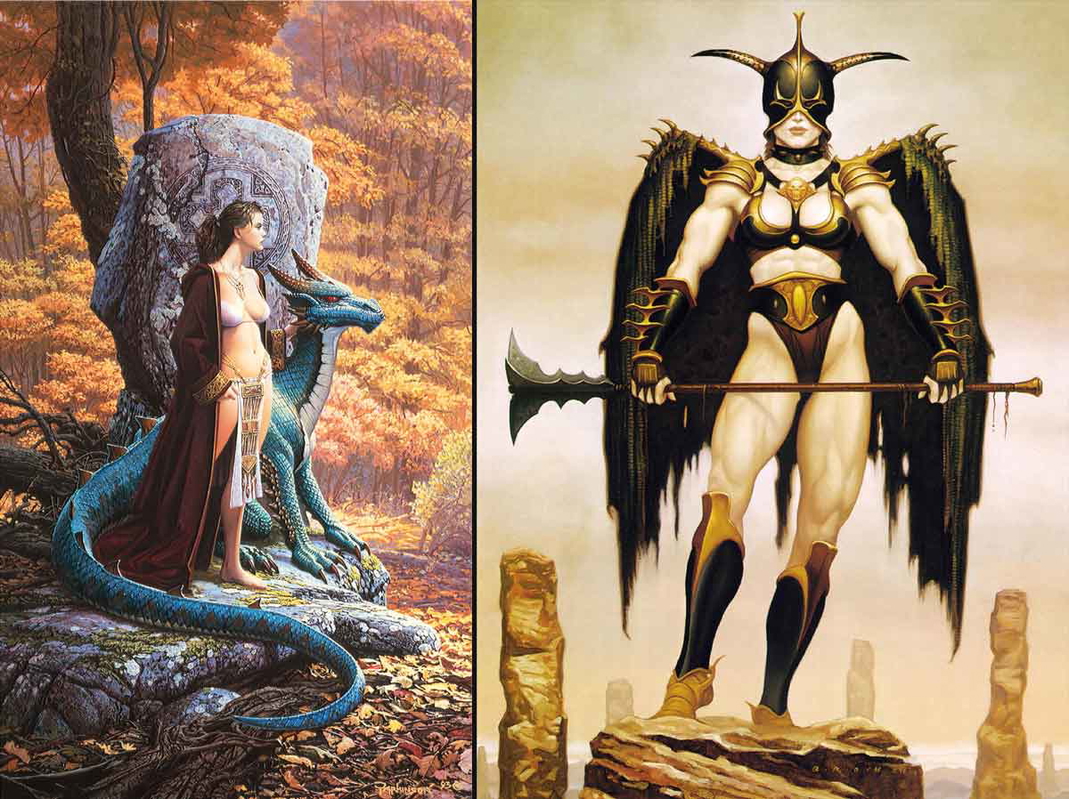
The women are still objectified, but if we look at the Oxford dictionary definition of objectification, we get two definitions:
- the action of degrading someone to the status of a mere object.
“the objectification of women in popular entertainment” - the expression of something abstract in a concrete form.
“the objectification of images may be astonishingly vivid in dreams“
The first definition applies to women in fantasy art, but perhaps so does the second. Perhaps they are not mutually exclusive and can exist in the same space on the same subject. In the second definition, women are objectified, but not exactly within the negative connotation of the first. Rather, they are representations of the beauty of the feminine form.
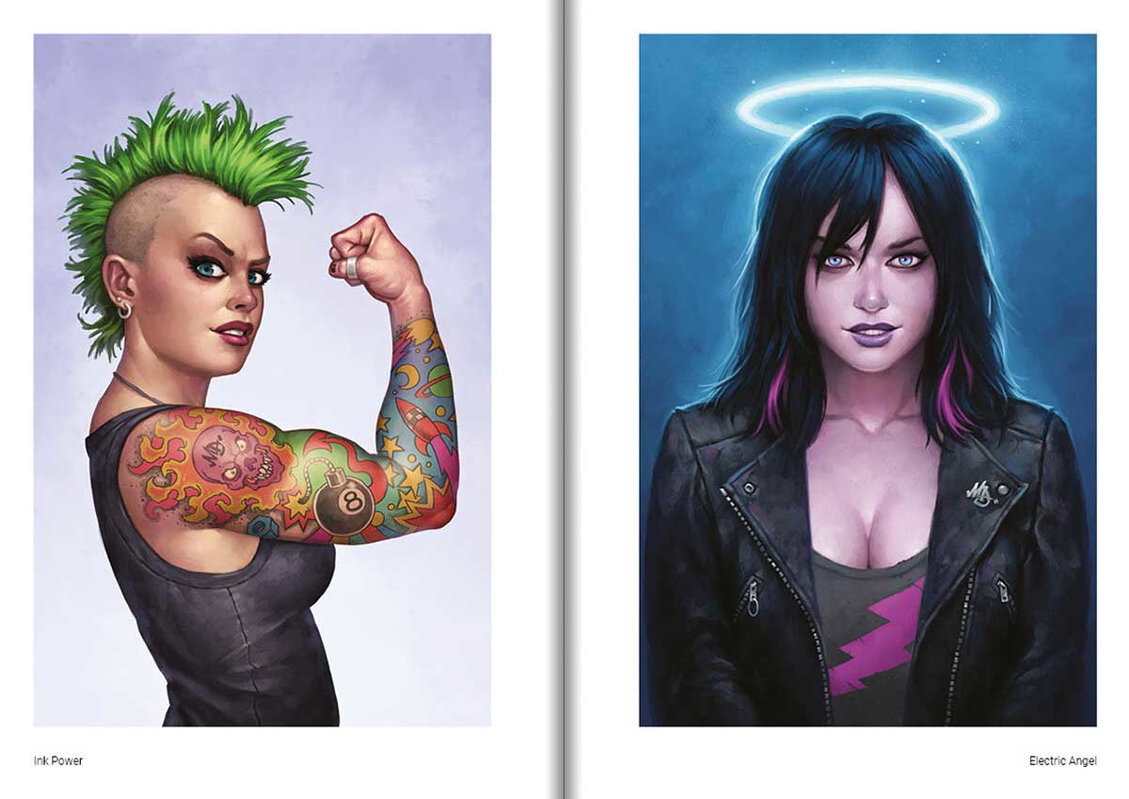
Many fine art enthusiasts apply the two definitions of objectification selectively, using the second to describe erotic art and nude art outside of the fantasy art genre and applying the first definition to the art within it. In whatever genre the nude woman exists, it’s likely to cause arousal in heterosexual men. Such is the male condition.
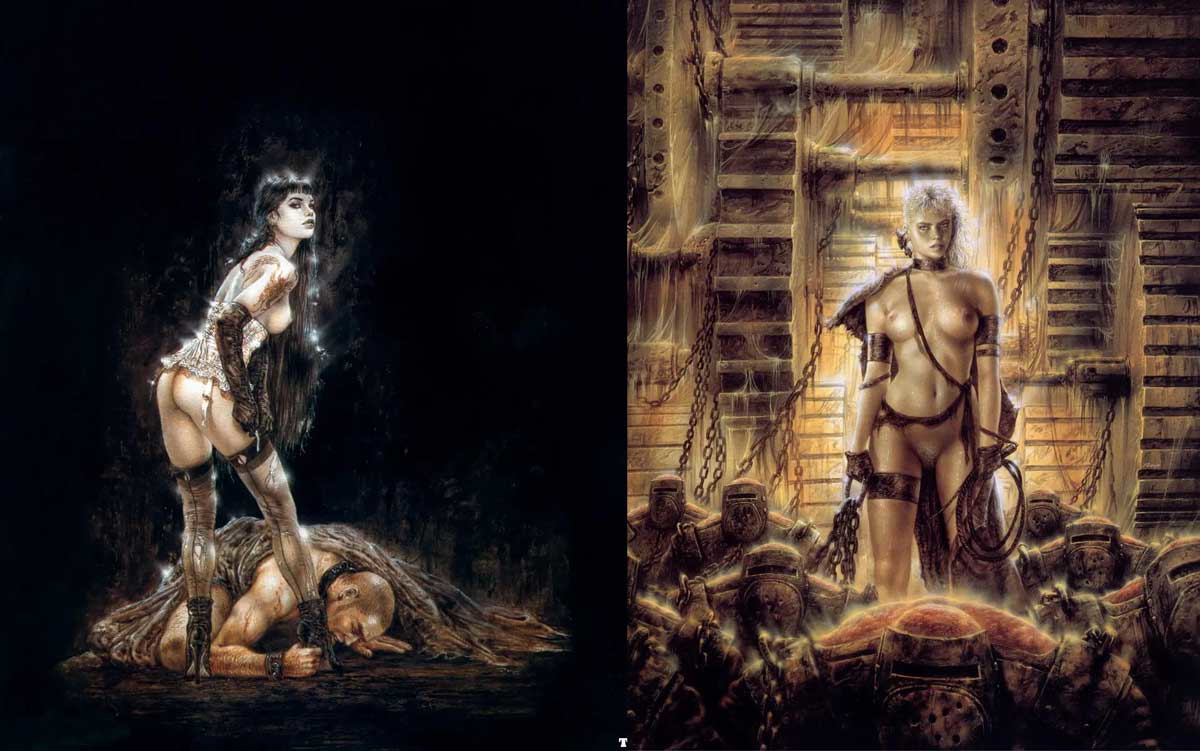
As an aspect of possible consideration is that men’s sexual desire leads them to want to visualize things that arouse them. This is a fundamental aspect of male sexuality that exists at a genetic level. In this regard, the male gaze in fantasy art is equally a symptom of male sexuality at a primal level.
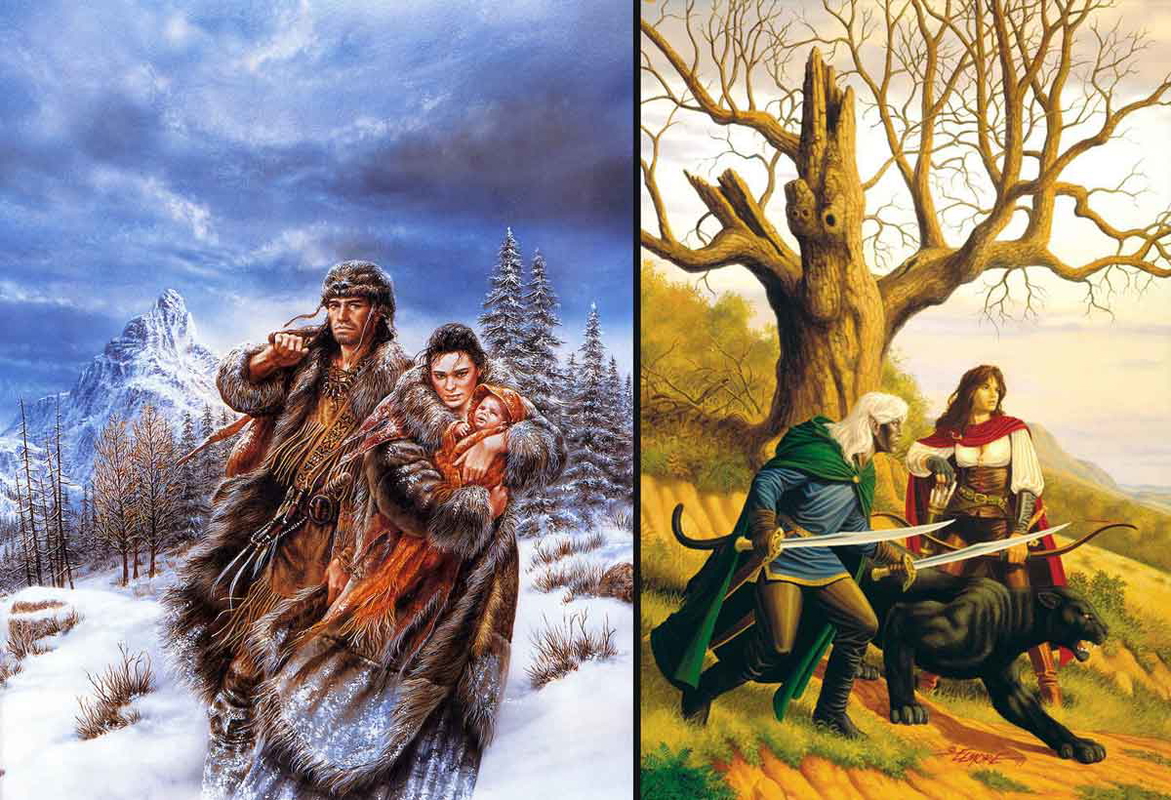
Art is subjective. It is not at the mercy of scientific classification. There are no true or false entities in something that is essentially an abstraction of human imagination. Thus, what is true for one person, may not be so for another. The paradox is true and false at the same time. The depiction of women in fantasy art is a product of the male gaze, but it can also be empowering and celebrate the beauty of women in an idealistic sense. This idealistic sense applies to men as well with impossibly muscled heroes and villains. It goes with the territory as it is, after all, fantasy.
